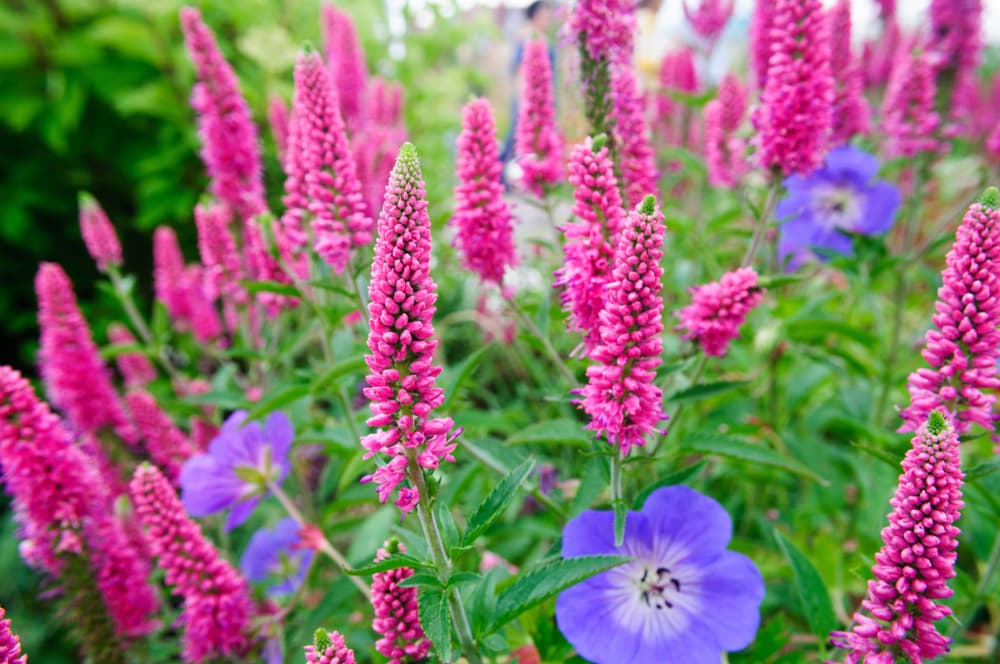Table of Contents
Veronica longifolia, commonly known as Speedwell, is easy to grow and maintained plant perennials that carry bountiful flowers indeed. These plant beds produce distinctive flowers that are tall and spiked. These flowers come to you in a wide spectrum of hues like white, blue, pink, purple, and violet. These flowers are prized possessions for gardeners and commercial cultivators who would want to enliven their gardens.
Veronica Speedwell carries slender wand-like flowers that can also lend a distinctive look to outdoor spaces of your homes. These colourful flowers attract a number of pollinators, hummingbirds, and vibrant butterflies. These flowers usually bloom during early summer and continue till the end of the sunny season. Veronica longifolia, therefore, makes a perfect choice for cultivators to grow across borders, cottage gardens, meadows, and rock gardens. Cut flowers look exceptional too.
Come on, let us explore the entire know-how on plant care with respect to this wonderful floral species.
How to Care Veronica Longifolia ‘Garden Speedwell’ Plant
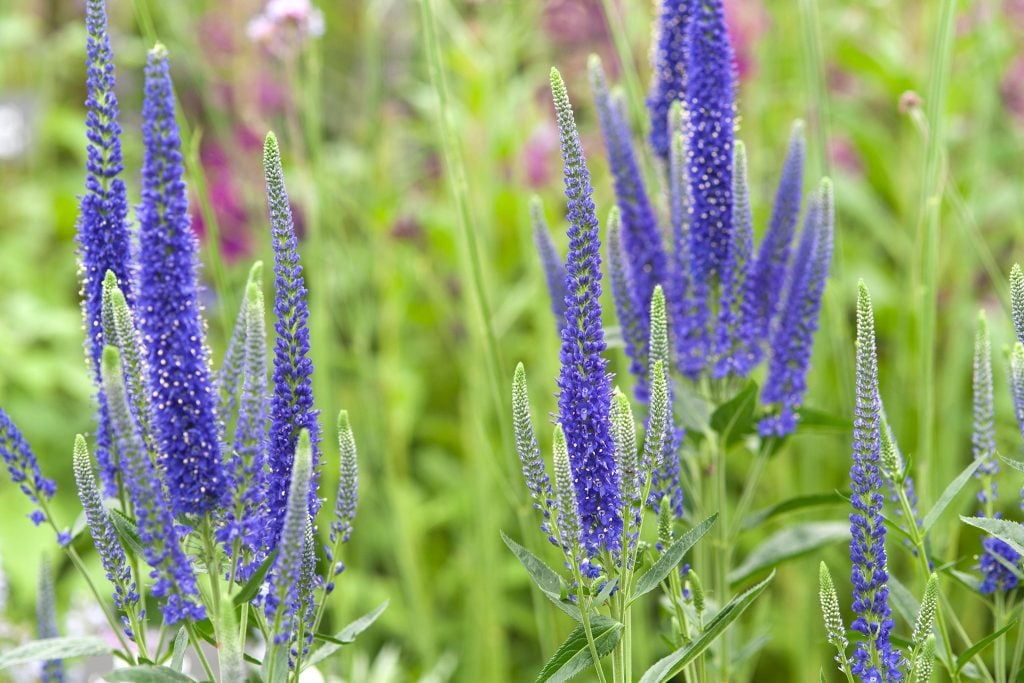
In this segment, let us discover how to care for Veronica longifolia. The different varieties of this versatile plant bedding shall also be discussed further.
1. Amount of Sunlight Required
The Veronica longifolia is a type of plant bed that requires a full-sun location, as a matter of fact. This means that the plants require 6-7 hours of sunlight during the day. The summer months between May and July provide the light that is required for them to grow. These are plant beds that can grow in partial shade locations too. However, these plants cannot thrive in shady locations. If you do not provide full-sun or at least afternoon shade locations, then the plant beds may suffer from foliar diseases. When you deprive these plants of optimal sunlighting, the leaves may develop unusual spotting, and the roots of the plants may ultimately collapse.
2. Type of Soil
The plant beds require loamy soil to grow in. The soil must be a well-draining one. If the type of soil is wet or soggy, the well-being of the plants can get impacted. In other words, the soggy soil can cause the roots of the plant to rot. In case you have poor or clayey soil, then you can treat the soil with garden compost or too. Organic fruit and vegetable peels can serve as nutritional compost for plant beddings. This way, the spiked speedwells can thrive well. These plant beds can lead a healthy life irrespective of whether the soil type is a Neutral or alkaline pH type.
3. Water Requirements
You must extensively water the Veronica speedwells, especially when they are young. The spiked speedwells bloom better when the plant beds receive a moderate amount of water. In general, these flowering perennials require about 1 inch of water per week. This is despite the fact that these are drought-resistant plant perennials. In other words, when the roots of the plants are well established, then the speedwells may not require intensive watering like how you did during their initial stages of growth. However, these plants require supplemental watering to prevent their roots from getting dry during exceptionally dry weather spells.
4. Weather Conditions
The spiked speedwells can survive any type of weather conditions that lie within their range. Although climatic conditions aren’t a barrier for these plant beds, you must be a little careful to protect them from strong winds. This is because high-speed winds can easily damage the flowering beds. Henceforth, you are advised to plant them near structure walls for an added degree of protection. You must also make sure that you do not place these plant beds in areas that are exposed to way too much mercury. This is because you do not want their leaves to get burnt.
5. Amount of Fertilizers
The Veronica speedwells are flowering perennials that rarely need to be fed. In fact, gardeners or cultivators omit to feed these plants altogether. However, you can add fertilizers or garden compost to the plantings once every year. Some of the Veronica Speedwell plants can also grow in higher proportions as they self-seed. Pollinators help them with the process of self-seeding. In this case, all you have to do is collect the seeds and plant them elsewhere. Therefore, too many fertilizers are not required for these plants to grow bigger. You can also get more enhanced flowering blooms through propagating, repotting, or plant cuttings.
6. Pruning for Spiked Speedwells
When the bloom season is in full swing, the faded flowers can be removed from the stalks of the stem. This process could enhance the process of plant beds producing more branches. The blooming can also become better. During the onset of the winter season, you can cut down the plant extensively so that just the foliage alone is present out there. In other words, when the first hard frost sets in, the plant can be cut down to the foliage alone and left a few inches above the ground.
7. Propagating Veronica Speedwells
The Veronica longifolia can ideally be propagated using three different ways:
- By dividing the plants
- Using plant-cuttings and
- Seeds
You can get into the process of diving the plants once every 3 or 4 years. This can be done by lifting the plants and dividing them into sections. You can divide the already established speedwells during the early spring or early fall season. This process can keep your plantings sturdy and vigorous. You have to take the outer portions of the plant for replanting, basically. The outer edges of the plant root more intensively as compared to the inner roots of the plant.
8. Repotting of Speedwells
Do you want to indulge in repotting of speedwells? Then, this is how the process is done! You may have to procure softwood cuttings during the spring or late summer months. You can add the potting mix and an enriched dosage of well-draining soil and garden compost into pots or containers. This is how repotting Veronica Speedwells has to be done. You can grow them in pots or gardens until the plant perennials grow large enough for you to transplant them into your gardens.
Taller varieties of spiked speedwells, say like the Veronica Spicata, can be transplanted to container gardens while you add well-draining soil. The spiked flowers may require staking even while you have them planted via pots or containers. You must also take an adequate degree of care and caution so as not to disturb the speedwell’s root system by transplanting the plant too often. Frequent plant transplants may cause the bedding to decline.
9. Process of Seeding
Veronica Spicata is a kind of panting that is rarely grown through seeding. However, if you are able to procure seeds, you can directly sow them into the ground. The seeding process can be done during mid-summer. These flowering seeds germinate in a span of 3-4 weeks from the time you have sown the seeds into the ground. These plants are sometimes spread by self-seeding in your garden. All you have to do is collect the seeds that have fallen to the ground. You can then plant them wherever you want.
10. Over-Wintering Tips and Techniques
It is better not to get into overwatering during the winter months. In order to protect the plants from wet weather, you may have to block or cover the plants using a floral cover or something. The excess water has to be drained out. In fact, very wet and moist soil can kill the roots of the pant. Therefore, wet or soggy soil is highly not recommended for this type of plant bedding. You must go in for free-draining nutrient-dense soil to keep the plant beds intact. For outdoor planting, you can use elevated plant beds. The raised or elevated beds prevent water pooling.
Interesting Varieties of Flowering Shrubs that Fall under this Category
1. Veronica longifolia ‘Blue Giant’
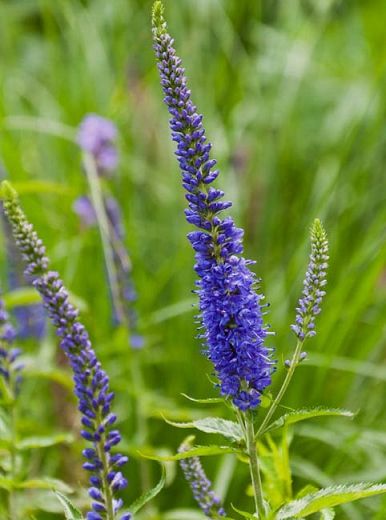
The Veronica Longifolia ‘Blue Giant’ can be a prized possession for any gardener. The tall spiked violet-blue flowers can lend fabulous vibes to your summer garden. The flowers start blooming in early summer and continue throughout the season. You can therefore see these tall flowers revealing their display throughout the months of July and August. The foliage comprises greyish-green leaves. These are flower beds that thrive in soils that are evenly moist and well-draining. The plant perennials grow 90-120 cm tall (3-4 feet) and 30-60 cm wide (1-2 feet). These flowers can attract birds and butterflies to your gardens. The attractive flowering beds suit outdoors, prairies, meadows, rock gardens, and cottage gardens.
2. Veronica ‘Georgia Blue’

The semi-evergreen plant perennials create an attractive display of royal blue flowers with pearly-white eyes. The blooming period starts early or late spring and continues throughout the summer months. These plant perennials, therefore, have a long growing period. This is a type of speedwell that creates an attractive ground cover for your garden or other outdoor spaces. You have glossy foliage comprising deep-green lance-shaped leaves. The Veronica Umbrosa ‘Georgia Blue’ grows up to a height of 10-15 cm (4 to 6 inches) and spreads 45-60 cm (18-24 inches) wide. The flowering beds need moist and well-draining soil to grow. The garden filled with the Veronica ‘Georgia Blue’ flowers can attract butterflies and birds too. These flowers can be grown exotically across borders, cottage gardens, city-based landscapes, and via containers.
3. Veronica Spicata ‘Royal Candles’
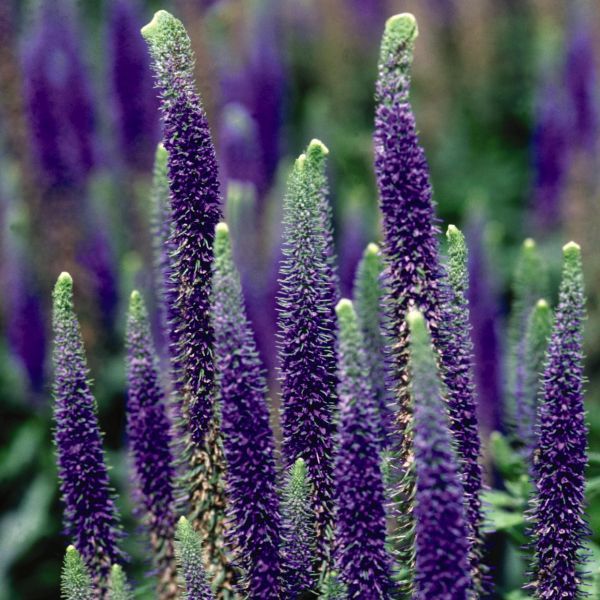
This is one of the best speedwells you can go in for. The Veronica Spicata ‘Royal Candles’ produces slender star-shaped flowers that have colours ranging from deep blue to purple. These attractive flowers start blooming in early summer, and the flowering season continues throughout summer. The bushy flowers grow base upwards and attract colourful and vibrant butterflies into their growing areas. If you grow the Veronica ‘Royal Gardens’, you can lend pleasing vibes to your summer gardens. The foliage comprising of deep-green leaves forms an attractive mound above which the spiked flowers grow. These plants grow at a height of 15-18 inches (37-45 cm) and spread 15 inches wide (37 cm). The plants require full sun and grow in medium-level moist and well-draining soil. These flowers can be grown in a fabulous manner across borders, cottage gardens, and rock gardens. You can grow them into pots or containers too.
4. Veronica ‘Hocus Pocus’

The Veronica ‘Hocus Pocus’ is known for its incredibly long purple wands. The planting perennial produces violet-purple flower spikes starting in early summer. The flowering season continues until mid-summer. You require moist and well-draining soil. The planting beds can take in alkaline or neutral pH-level soil. You can choose loam soil as it is lightweight and durable for these plants to grow. The flowers grow in bushy, upright clumps. The plants grow at a height of 16-20 inches (45-50 cm) tall and spread 12 inches wide (30 cm). The plants require full sun locations, although they can occasionally tolerate partial shade too. These flowering beds can enliven your borders, cottage gardens, rock gardens and container growing spaces. These are easy-to-grow and low-maintenance plants that can also attract a number of butterflies into your gardens.
5. Veronica Spicata ‘Red Fox’
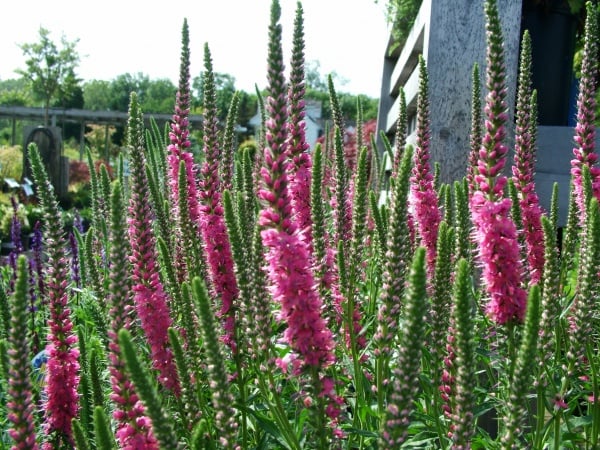
The Veronica Spicata ‘Red flox’ is a speedwell plant perennial that forms clump-like structures. The flowers are fushia pink that start blooming in mid-summer, and the season continues until late summer. These are eye-catching flowers on display with a blooming period of 4-5 weeks. The bushy foliage comprising deep-green leaves also makes the flora lush. The plants require full sun with average, moist soil that is well-draining. The flowers grow as upright clumps at heights of 12-15 (30-37) inches tall and wide. The cut flowers, too, look exceptionally good, serving as wonderful ornamental pieces for your homes or commercial properties. The gardens filled with Veronica ‘Red Fox’ attracts beautiful butterflies into your summer gardens. These flower beds look attractive across borders, cottage gardens, and rock gardens.
Summing Up
All in all, the Veronica Speedwell plants are easy to grow and maintain. The tall spike-shaped flowers can lend exotic looks to your borders, fences, or gardens. These flower beds mainly thrive during the summer season. They require full sun or partial shade locations to grow in. The flowers can range in hues like deep blue, royal blue, fushia pink, purple, and lavender. As the gardens can bloom with attractive shades of tall-spiked flowers, they make good flower cuttings too.
You can display these flower cuttings inside vases or earthy-style hanging baskets to beautify your living rooms, verandahs, or even your commercial properties. These are drought tolerant and promote themselves through self-seeding options. You require medium watering for these plants to bloom to their fullest.
You require well-draining and moist soil of any pH type. These planting bushes suit borders, rock gardens, cottage-style gardens, meadows, or prairies. You can grow the flowering beds via pots or containers too.

